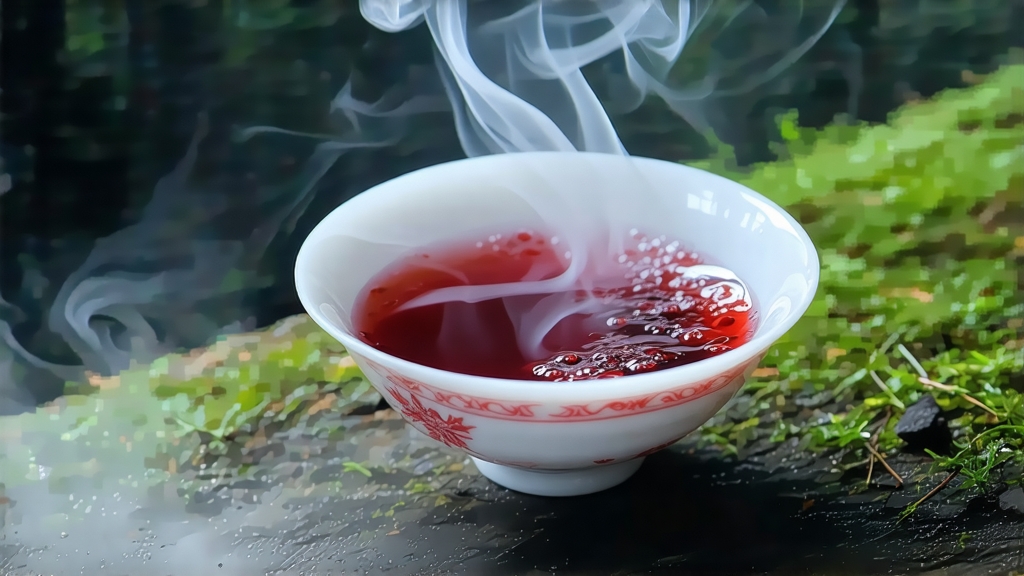
Long before Assam, Ceylon, or Earl Grey entered the global lexicon, a small village in the Wuyi Mountains of Fujian province was already sending curls of fragrant smoke across the maritime tea routes. That village—Tongmu Guan—and its tea, Lapsang Souchong, are now recognized as the primordial hearth from which all black tea (hong cha, literally “red tea” in Chinese) sprang. To understand Lapsang Souchong is to hold a compass that points back to the 17th-century birth of fully oxidized tea, to the collision of Chinese craft and European thirst, and to a flavor so distinctive that it still divides palates into instant devotion or bewildered retreat.
Historical footprints
Local lore fixes the accidental invention of Lapsang Souchong around 1567–1610, when an army unit passing through Tongmu Guan commandeered tea sheds for the night. The next morning, anxious farmers rushed the delayed leaf to market by drying it over fresh pine fires to mask the musty odor of over-oxidization. Dutch traders at Xiamen port loved the aggressive aroma, paid premium silver, and shipped it to London where it became the “bohea” that filled Queen Catherine’s dowry chest and Samuel Pepys’ diary. By the early 18th century, pine-smoked Lapsang was the most expensive tea at Mincing Lane auctions, outbidding green teas and inspiring the British to transplant tea bushes to India in hopes of replicating the style.
Micro-terroirs within Tongmu Guan
Tongmu Guan is a narrow, forested gorge at 27° N latitude, where the Wuyi massif funnels humid subtropical air into cool night mists. The village itself is a protected UNESCO site; no outside tea leaf may enter, and only 156 registered households may still produce genuine “Zheng Shan Xiao Zhong.” Within this 50 km² core, micro-valleys such as Miaowan, Guadun, and Jingui offer subtle variations: Miaowan leaves pick up resinous notes from Masson pines growing on granite, while Guadun’s higher elevation (1000 m) yields slower growth and a sweeter, longan-fruit undertone. Outside the gorge, neighboring counties produce “wai shan” (outside mountain) versions; they are pleasant but lack the mineral depth and cool pine finish that the original terroir imparts.
Cultivars and leaf grades
The traditional cultivar is Xiao Ye Zhong (“small leaf species”), a semi-wild Camellia sinensis var. sinensis shrub that has acclimated to the rocky, slightly acidic soils. Its leaves are diminutive, olive-shaped, and high in geraniol, a terpene that translates into rose-like top notes after smoking. Farmers now also plant Wuyi Qizhong (the same mother stock used for Da Hong Pao) to increase yield, but connoisseurs still chase the needle-shaped leaves of old-growth Xiao Ye Zhong. Grading follows leaf size and degree of smoke penetration:
- Pekoe (one leaf and a bud) offers the most balanced sweetness.
- Broken Souchong, intentionally crushed for the Russian market, absorbs heavier smoke and steeps a tarry liquor.
- Special Leaf, harvested only before Qingming festival, is so delicate that it is smoked for mere minutes, yielding a burgundy infusion with hints of lychee and cedar.
Crafting the smoke: a choreography of fire and air
Unlike black teas that are merely withered, rolled, fully oxidized, and baked, Lapsang Souchong undergoes a final pine-smoke drying stage that can last from 6 to 48 hours. The fuel is 40-year-old Masson pine trunks, split and seasoned for two years until the resin crystallizes; green pine would emit bitter turpentine. A brick-lined pit, 1.5 m deep, is heated to 80 °C; bamboo trays holding the oxidized leaf are stacked 1.2 m above the embers so that only aromatic smoke—never flame—touches the tea. Masters regulate airflow by adjusting ceiling flaps, allowing the leaf to “breathe” in cycles: 20 minutes of dense smoke, 40 minutes of rest, repeated up to six times. The goal is not to mask the tea but to marry